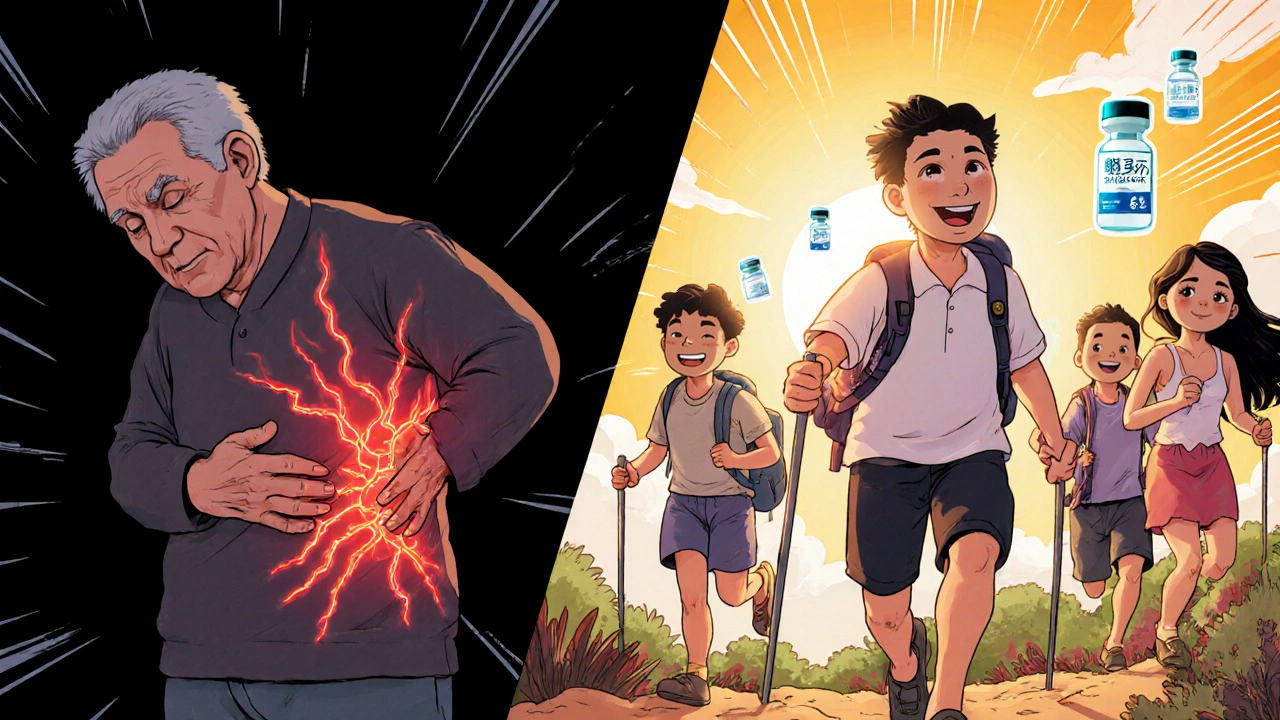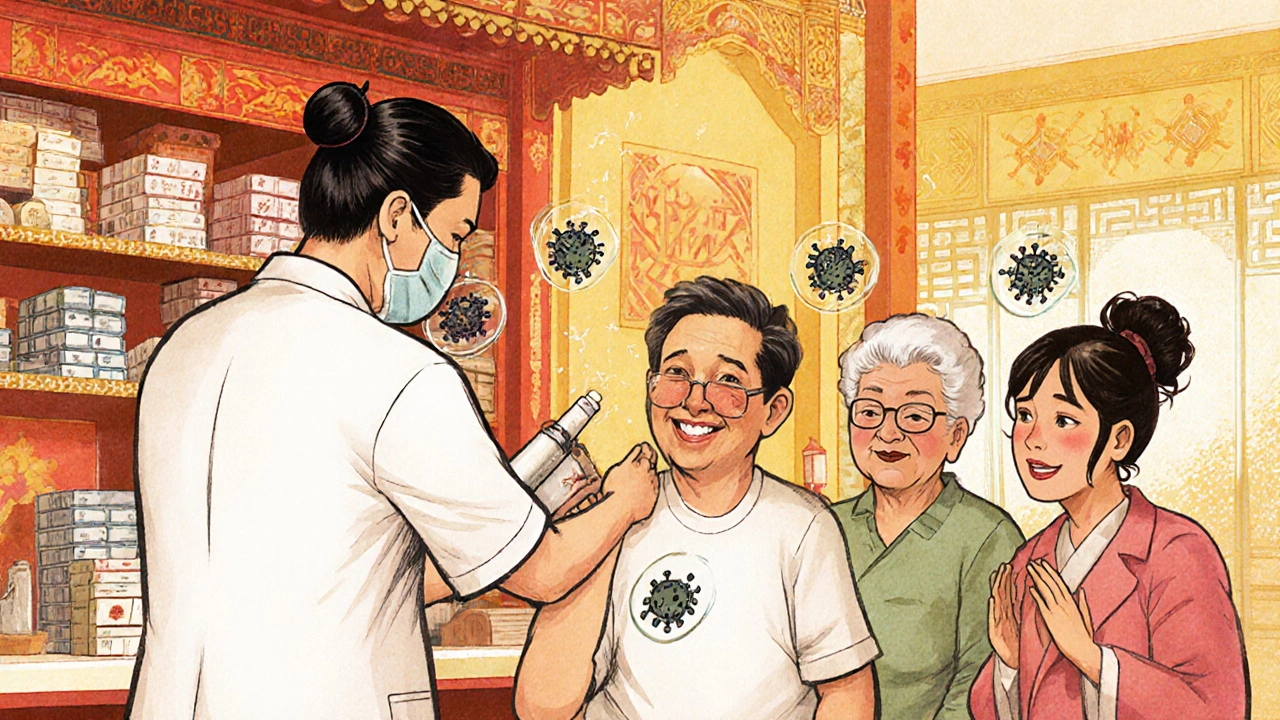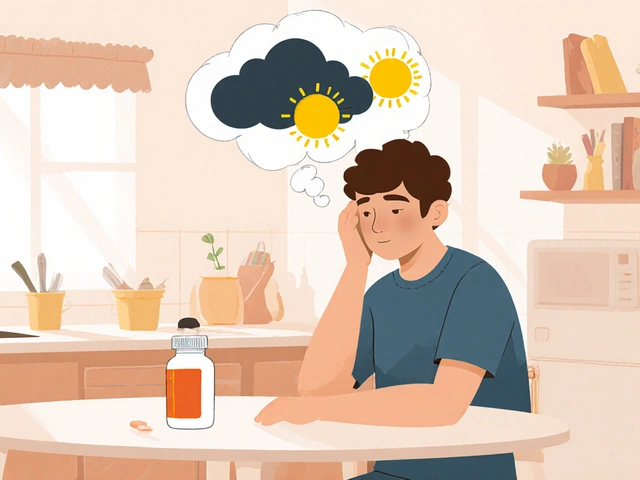Shingles isn’t just a rash. For many people, it’s months of burning pain that won’t go away-even after the blisters heal. That’s because shingles is caused by the same virus that gives you chickenpox as a kid. It hides in your nerves for decades, then wakes up when your immune system gets weak. And if you’re over 50, your risk goes up fast. The good news? There’s a vaccine that works better than anything we’ve ever had. It’s called Shingrix, and it’s the only shingles vaccine available in the U.S. today.
Who Needs the Shingles Vaccine?
You don’t need to wait until you’re 65 to think about shingles. The CDC recommends Shingrix for everyone 50 and older, no matter if you’ve had shingles before or not. Even if you got the old vaccine (Zostavax), you still need Shingrix. Zostavax was pulled from the market in 2020 because it didn’t work as well. Shingrix cuts your risk of shingles by over 90% in people 50 to 69, and still keeps you protected at 85%+ after age 70.
And here’s something many people don’t know: if you’re 19 or older and have a weakened immune system-because of cancer, HIV, organ transplants, or medications like steroids or biologics-you’re at even higher risk. Shingrix is safe for you. The old vaccine wasn’t. That’s why doctors now tell immunocompromised patients: get Shingrix, even if you’re younger than 50.
People with diabetes, heart disease, or chronic lung conditions are also more likely to get shingles and have worse symptoms. If you have any of these, talk to your doctor about getting vaccinated as soon as possible. It’s not just about avoiding the rash. It’s about avoiding the pain that can last for years.
When Should You Get It?
Shingrix isn’t a one-shot deal. It’s two doses. The first shot gets your body ready. The second shot makes sure that protection lasts. The CDC says the second dose should come 2 to 6 months after the first. That’s the sweet spot for strongest, longest-lasting immunity.
But if you’re immunocompromised, you can get the second dose as early as 1 to 2 months after the first. That’s because your immune system doesn’t respond as strongly, so you need the booster sooner. If you accidentally get the second shot too early-say, less than 4 weeks after the first-you’ll need to repeat it. That’s not a mistake you want to make.
Timing matters if you’re about to start chemo or other immune-suppressing treatments. If you’re scheduled for a transplant or starting a new biologic drug, get both doses at least 2 weeks before treatment begins. Waiting until after treatment starts might mean your body won’t respond well enough to build protection.
And if you’ve had shingles recently? Wait at least one year before getting vaccinated. Your immune system is already on high alert, and the vaccine works better when you give it some time to reset.
How Effective Is Shingrix?
Shingrix is the most effective shingles vaccine ever made. In clinical trials, it prevented shingles in 97% of people aged 50 to 69. For those 70 and older, it still worked at 91%. That’s a huge jump from Zostavax, which only worked about half as well. Even more important, it cuts the risk of postherpetic neuralgia (PHN)-the nerve pain that can last months or years-by over 90%.
And it lasts. Data from 2023 shows that protection stays strong for at least 7 years after the second dose. For most people, that’s more than enough. Experts are now studying whether a third dose will be needed later in life, but right now, two doses are all you need.
It’s not perfect. About 8 out of 10 people feel soreness at the injection site. Nearly half get muscle aches, fatigue, or headaches. About 1 in 4 have a fever for a day or two. These side effects are real, but they’re temporary. Most people feel back to normal within 2 to 3 days. And compared to the pain of shingles? It’s nothing.

What About the Cost?
Shingrix costs about $185 to $220 per dose, depending on where you get it. That’s $370 to $440 total for both shots. But if you have Medicare Part D, you usually pay nothing out of pocket. Most private insurance plans cover it too. If you’re uninsured, some pharmacies like CVS and Walgreens offer discount programs. You can also check with your state’s health department-some run free or low-cost vaccination clinics for adults.
Don’t let cost stop you. Shingles can lead to hospital visits, lost work time, and long-term nerve damage. The vaccine is cheaper than the aftermath.
What If You’re Already Had Shingles?
Yes, you can get shingles more than once. It’s rare, but it happens. And when it does, it’s often worse the second time. That’s why even if you’ve had shingles, you still need the vaccine. Wait at least one year after your outbreak before getting vaccinated. That gives your immune system time to calm down and respond properly to the vaccine.
There’s no need to get tested for chickenpox antibodies or past shingles. If you’re 50 or older, you’ve likely been exposed to the virus. The vaccine is safe whether you remember having chickenpox or not.
What About Side Effects?
Shingrix causes more reactions than most vaccines. That’s because of the adjuvant-a substance added to make your immune system react more strongly. It’s what makes it so effective.
Common side effects include:
- Pain, redness, or swelling at the injection site (78% of people)
- Muscle aches (45%)
- Fatigue (38%)
- Headache (34%)
- Shivering or fever (11-14%)
These usually start within a day or two and fade in 2 to 3 days. Some people feel so wiped out they need to take a day off work. That’s why experts advise: don’t schedule a big event, travel, or important meeting within 48 hours of getting the shot.
Severe allergic reactions are rare-less than 1 in 100,000. If you’ve ever had a life-threatening reaction to any vaccine ingredient, don’t get it. Talk to your doctor first.

Where Can You Get It?
You don’t need to see your doctor to get Shingrix. Most pharmacies-CVS, Walgreens, Rite Aid, and many local clinics-can give it to you. You can walk in, no appointment needed. Just bring your insurance card and ID.
Pharmacists are trained to administer it. They’ll check your vaccine history, make sure you’re eligible, and answer any questions. Many offer automated reminders for your second dose, which helps a lot. About one-third of people miss their second shot because they forget. That’s a waste of the first one.
If you’re homebound or have trouble getting around, ask your doctor about home vaccination services. Some Medicare Advantage plans cover this.
What’s Next for the Shingles Vaccine?
GlaxoSmithKline, the maker of Shingrix, is testing a single-dose version in early trials. If it works, it could change everything-no second visit, no missed doses. But it’s still years away.
Meanwhile, experts are pushing to vaccinate people earlier. The American Geriatrics Society now says: start the conversation at age 50. You don’t have to wait for Medicare. If you’re 50 and healthy, get it now. The sooner you’re protected, the better.
By 2030, nearly 1 in 5 Americans will be over 65. That means more people at risk for shingles. Vaccination rates are climbing-up from 34% in 2020 to 42% in 2023-but they’re still too low. Over 50% of eligible adults are still unprotected.
Don’t be one of them. Shingles doesn’t care if you’re healthy, active, or young at heart. It only cares if your immune system lets it in. Shingrix is your shield. Get both doses. Protect yourself. Save your future self from months of pain.
Can I get the shingles vaccine if I’m under 50?
Yes-if you’re 19 or older and have a weakened immune system due to disease or medication. For healthy adults under 50, the vaccine isn’t routinely recommended because your risk of shingles is still low. But if you’ve had shingles before or have a family history of severe cases, talk to your doctor. They might still recommend it.
Do I need the shingles vaccine if I got chickenpox as a kid?
Yes. Everyone who’s had chickenpox carries the virus in their nerves. It can reactivate at any time, especially as you age. Getting the shingles vaccine doesn’t mean you didn’t have chickenpox-it means you’re taking steps to prevent the next stage. You don’t need a blood test to prove you had chickenpox. If you’re 50 or older, just get the vaccine.
Can I get Shingrix and the flu shot at the same time?
Absolutely. You can get Shingrix and the flu shot, pneumonia shot, or COVID booster all on the same day. Just use different arms. There’s no evidence that combining vaccines reduces their effectiveness or increases side effects. In fact, getting them together saves you time and ensures you stay up to date.
What if I miss my second Shingrix dose?
Don’t panic. If you’re more than 6 months past your first dose, just get the second one as soon as you can. You don’t need to start over. The vaccine still works-even if there’s a long gap. But don’t wait years. The longer you wait, the more protection you lose. Set a reminder, ask your pharmacy to call, or add it to your calendar. Two doses are the key.
Is Shingrix safe if I have an egg allergy?
Yes. Shingrix does not contain egg proteins. It’s made using recombinant technology, not eggs. People with egg allergies can safely receive it. This is different from some flu vaccines, which are made using chicken eggs. If you’ve had a severe allergic reaction to any ingredient in Shingrix, don’t get it-but egg isn’t one of them.
What to Do Next
If you’re 50 or older, call your pharmacy today. Ask if they have Shingrix in stock. Schedule your first dose. Don’t wait for a doctor’s appointment. Most pharmacies can handle it on the spot.
If you’re under 50 but immunocompromised, talk to your specialist. Bring up the vaccine. Don’t assume it’s only for older adults. Your immune system needs the help.
And if you’ve already had shingles? Still get it. You’re not immune. The vaccine protects you from the next one.
Shingles can strike anyone. But it doesn’t have to ruin your life. Two shots. One decision. Years of protection. That’s all it takes.







Gus Fosarolli
November 28, 2025 AT 04:22So let me get this straight - I’m supposed to pay nearly $450 to avoid a rash that might not even happen, but if it does? Oh, then I’m stuck with nerve pain that outlasts my marriage? Thanks, science. I’ll take my chances with yoga and denial.